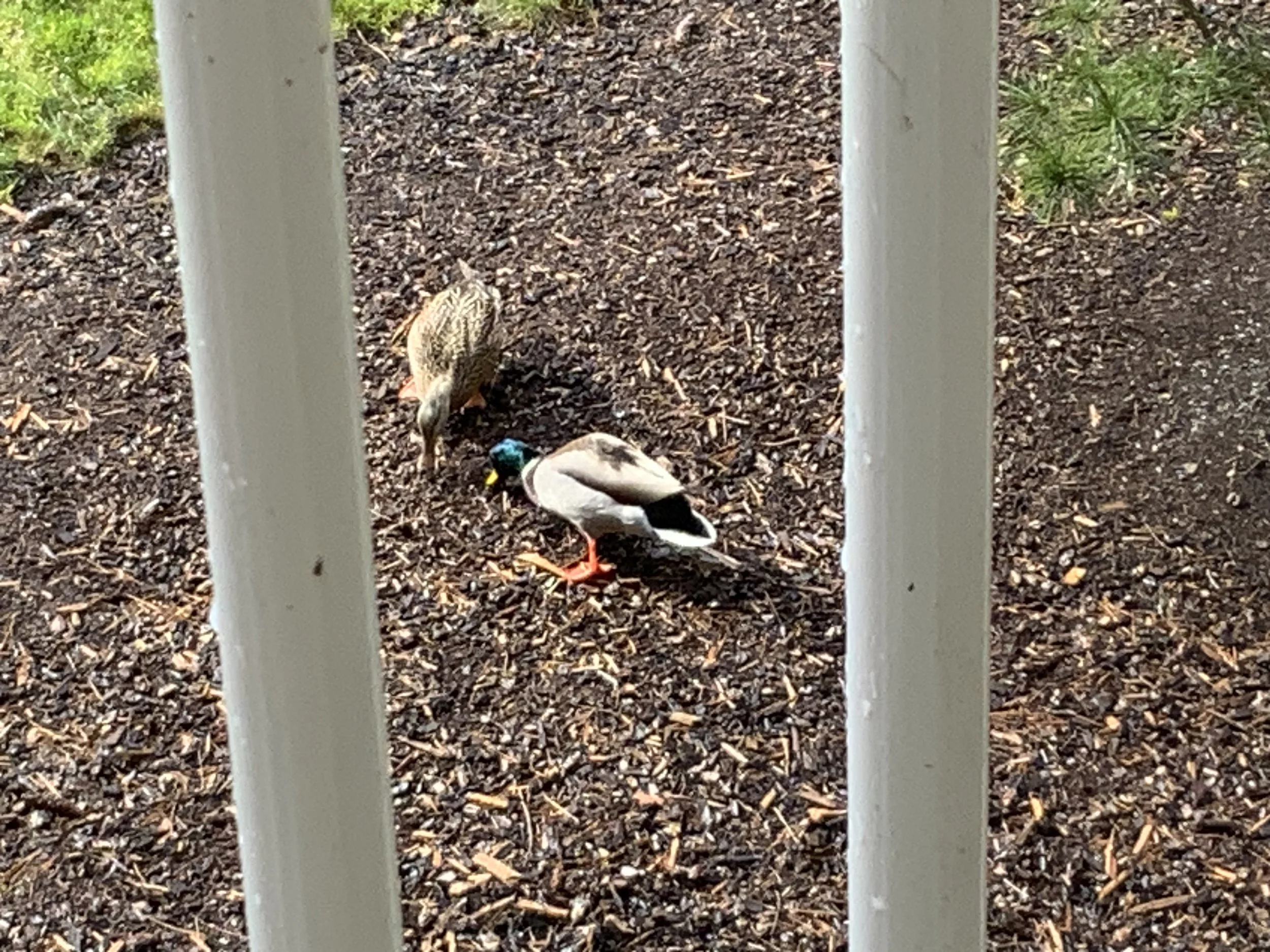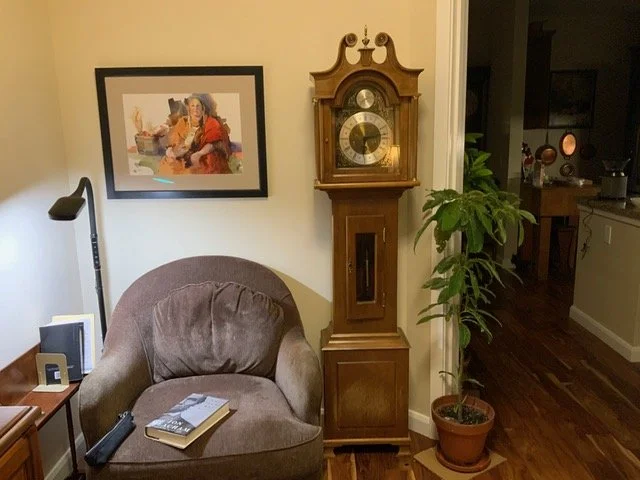#27 A WOMAN’S BRIEFS -- TREES
“You can call it a Tulip tree if you choose to, but that’s no Tulip tree. It’s a Magnolia.” So said the university student with snobby certitude.
We had invited this preppy girl to our home for Sunday dinner (thinking she might be a suitable date for our bachelor son). She stood in our kitchen, looked outside with us through broad windows at our huge Tulip tree standing guard at lawn’s edge, and smartly straightened us out. Our Magnolia, our Dinnerplate Magnolia, was just off to the north, at the edge of our wooden deck.
Our son gave me a look. You know, one of those that said, “Really, mom?” That was several years and two moves ago. Our son has since, quite on his own, found the love of his life.
It’s poor quality, this picture of a picture, but you can see the Tulip tree in full blossom on the right, and the Magnolia near the cedar on the left in this picture. The windows through which we glanced are blocked in this photo by rhododendrons. Yes, Rhododendrons.
I tell you this story because just this past Sunday a similar scenario occurred. In this case I was much more willing to be corrected.
A group of friends had come for Sunday brunch. They were admiring potted trees on our balcony that shield against hot afternoon sun. Arborvitaes, two of them.
“You can call those Arborvitaes,” said my friend, Karen, genuinely Master Gardener savvy. I trust anything she says about things with roots that belong in dirt.
“Those are not Arborvitaes,” she said. “Those are Western Red Cedars. They are going to get HUGE. They won’t be on your balcony much longer.” Everyone else nodded their heads in agreement.
“But the nursery worker said Arborvitae.”
“Nah-huh.”
Let me tell you – if the last six years of political turmoil has taught me anything, it’s taught me to do research. So, I did, and I’m convinced these trees are Emerald Green Thuja Arborvitaes, which are, at the core, white cedars.
These trees were named Thuja (pronounced Thuya) in Greece long before BC became AD. And if I’ve followed the history correctly, in the 16th century they made their way to the colony of Quebec, from there to France, and I’m not sure how, but ultimately back to the U.S. where the Thuja met two native cousins, the red and the white cedars. The Emerald Green Thuja is a form of the Eastern White Cedar. Native Americans in the east showed early white settlers how to prevent scurvy by making tea from the foliage.
“Let’s name it “Arbor Vitae,” Tree of Life,” said grateful settlers but very soon they proved not grateful enough.
It was a Danish nurseryman who in 1950 named a form of cedar that stayed green all winter. He called it “Smaragd.” Go ahead, say that. Sure. So, Americans chose the English translation, “Emerald.”
Imagine my relief to learn that unlike the Green Giant Thuja that grows to forty or more feet, the Emerald Green Thuja tops off at ten or fifteen. I’m convinced this is what we have on our balcony. Please don’t correct me. Or if you must, be kinder than our young guest was about the Tulip tree.
Well then. Whew . . . it’s possible my friend and the nursery worker could both be right. These trees are cedars, and they are arborvitae.
Admittedly, arborvitae should have dense growth. Mine? Not so much. Mine sport sporadic branchlets, and sprays, like cedars in a parched forest. Yeah, well I was initially a bit neglectful. I’ve gotten better at watering, so notice, the tops are thickening. That’s what threw Karen off, my neglect. She knows what an Arborvitae should look like. And let’s face it. She knows a cedar when she sees it.
But here’s the point of this blog post. Some years ago, a person I hardly knew challenged my belief system. I believed my tulip tree was my much loved tulip tree. She believed it was a magnolia. You know what? She could have been right. I might have been misinformed by the people from whom we bought the house. But the University student hadn’t earned my friendship, my trust, or the right to correct me.
My Emerald Green Thuja Arborvitaes may well be red cedars (they aren’t, I’m sure—just look at that bark). Karen may well be right. I trust her. I trust her opinion enough to investigate my own. I’m pretty sure she’s wrong. I’ll be sure to tell her. We have different opinions, but we can talk about them. We can challenge beliefs. The Greeks didn’t give us just the word “Thuja,” they gave us “φιλία,” (philia), a word describing the highest form of love —friendship.
Behind a young avocado, an Emerald Green Thuja arborvitae, or is it red cedar?







